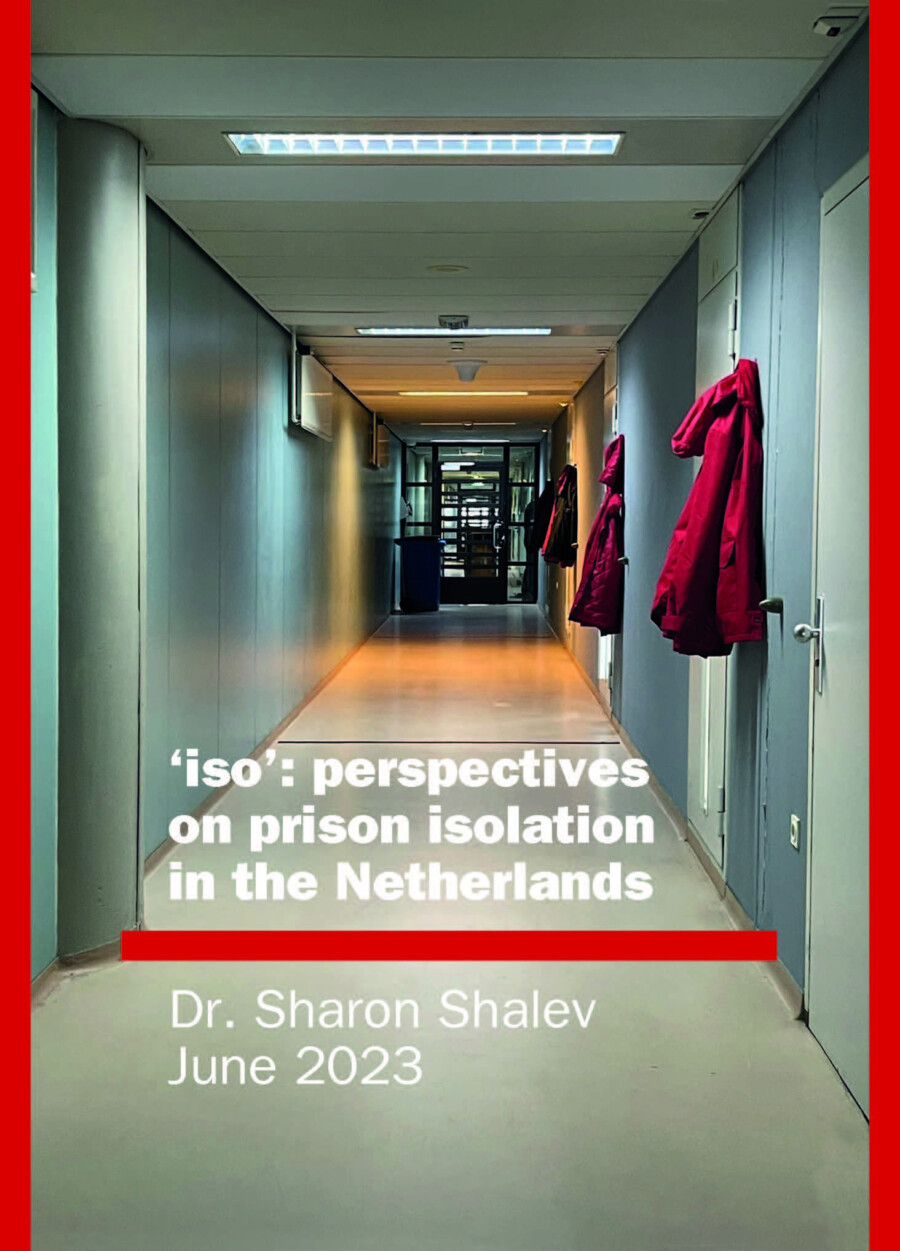ISO: prison isolation (solitary confinement) practices in the Netherlands

By Dr Sharon Shalev
This is a report of a comprehensive study of the use of solitary confinement, or ‘iso’ (short for ‘isolation’), in the Netherlands, focusing on ‘regular’ isolation units where people are isolated as punishment or as a protective measure.
The study seeks to explore: a) What prison isolation entails in terms of material conditions and the daily regime in isolation, and b) How the different stakeholders: prisoners, frontline prison staff, prison managers and mental health professionals perceive its use.
To answer the first set of questions, we visited seven different prisons and the isolation units and cells in them. A human rights-based approach was used to assess how prison isolation cells in the Netherlands measure up to international human rights standards, in particular the UN Nelson Mandela Rules. The second set of questions, about how stakeholders perceived isolation, was explored through interviews with 87 individuals.
The study was commissioned by the Dutch Custodial Institutions Agency (DJI) and led by Dr Sharon Shalev Centre for Criminology, University of Oxford alongside Dr Esther van Ginneken of Leiden University and Maartje Schrauwen, Management Trainee at PI Arnhem, during August and November 2022. Interviews were conducted in Dutch and English.
'Iso': solitary confinement in the Netherlands
Full report (link to PDF)
Executive summary in English (link to PDF)
Executive summary in Dutch (link to PDF)
Press release
Oxford academic finds thoughtful attitudes but austere conditions in solitary confinement units in Dutch prisons.
The study, commissioned by the Dutch Custodial Institutions Agency (DJI) and led by Dr Sharon Shalev of the Centre for Criminology at Oxford, found that solitary confinement was used as short but sharp punishment. Whilst stays in solitary confinement, or ‘iso’ as it is colloquially known, were relatively short, material conditions were austere; daily regimes were poor; practices were sometimes outdated and unnecessarily punitive (for example, in some units, mattresses were removed from iso cells during the day), and those isolated could only exercise very little personal autonomy even with very basic things (such as not being able to flush their in-cell toilet).
The study found that most stays lasted a few days, and none exceeded the UN Nelson Mandela Rules' 15 days threshold. Other positive findings included non-punitive staff attitudes and a wish to improve conditions and practices in solitary confinement units. It was also positive to note that units did not operate at full capacity: a spot survey of all isolation units in the Netherlands found that only 32.2% of all available isolation cells were occupied at the time.
The report makes 46 recommendations, including on: improving material conditions and daily activities; making a clearer distinction between isolation units as places of punishment and places of protection; Alternatives to isolation and further reductions in the length of stays; and improving prisoners’ privacy and medical confidentiality.
The Dutch prison service welcomed the report, stating that: “[This is] a balanced report that states what is going well, but also what we can still improve. [..] A working group is now being set up to develop a vision for isolation placements. They will take the recommendations from the research and the input provided on the national day. The working group will also consider the implementation of this vision within the branches.”
Dr Shalev, the report’s author, said: “I applaud the Dutch Prison Service’s open and transparent engagement with this research, and welcome the setting up of a special working group to consider and implement the report’s findings and recommendations. I very much look forward to working with them to realise their vision.”
Ends/